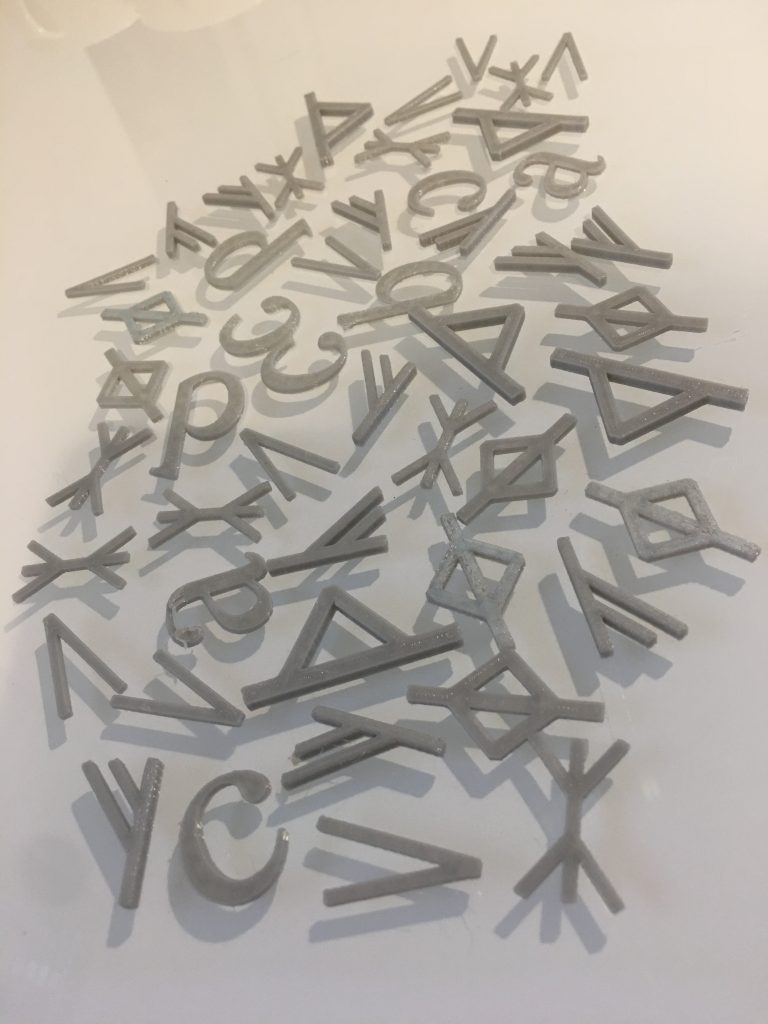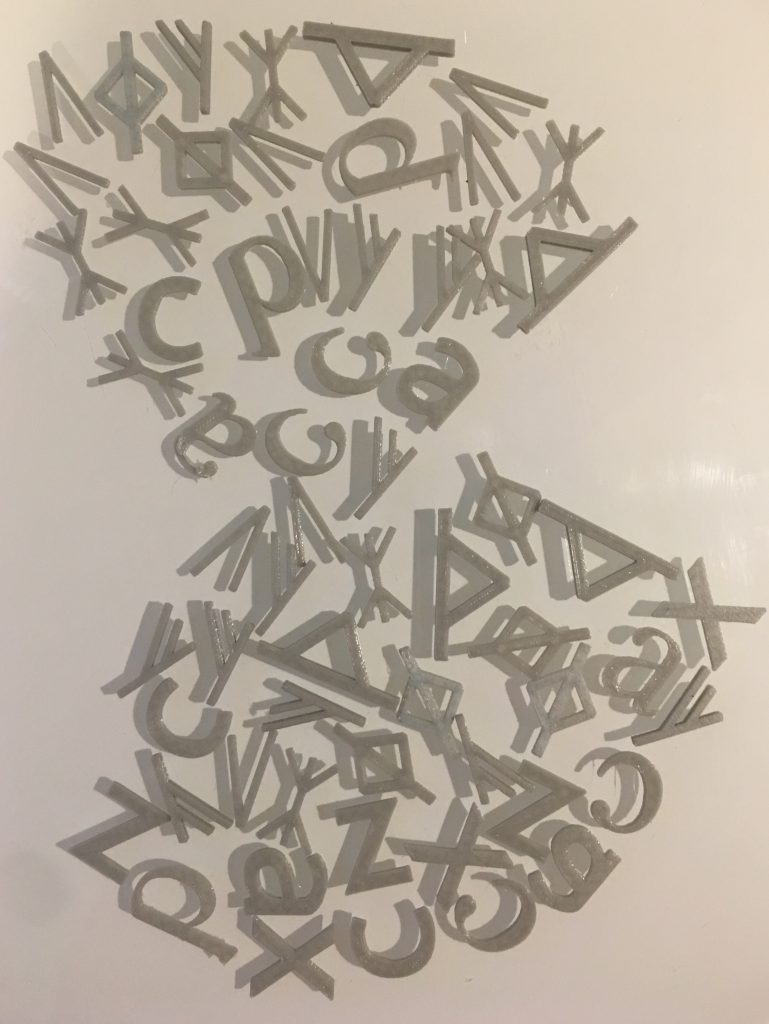“Liberation rests on the construction of the consciousness, the imaginative apprehension, of oppression, and so of possibility” Donna Haraway
Context
«Adiós sombra inolvidable mi dicha placer mi gloria rogueraháta en mi memoria en mi mente invariable mi destino irremediable oñecumpli cherehe upévare ipahaite âgâ ndéve apurahéi ikatúnte ndajuvéi adiós che parahekue» Emiliano R.Fernandez
So long, farewell, indelible memories of joy that I will take with me. An irremediable destiny is taking me far away and I can only sing in sorrow… So long, farewell my beloved place…
The words of the poet puts my memory in unceded places. Where context means belonging, a cry for identity, for understanding… Will I ever know where did the exile start? Is there a choice, a way to reconcile the past that we don’t know?

I continue in this action the exercise of confronting the letters and icons. Revealing the Latin alphabet as the colonizer, the imposed canon to write and read guarani.
I bring now “live” Latin characters, that come into the play to create a complex conversation. Is this dialogue possible? Can we make it possible?
In this game/exercise, the decolonization gesture is a call for starting this “colloquio”, (colloquy), where all voices need to be equal, respected and valued.

Guarani Cosmovision is based in the observation of nature and the universe. People are composed of two souls, the spiritual soul called “ñé” (which also means language, word, sound with sense). This soul expresses itself through speaking, singing, praying, meditating.
The corporal soul is called “ã”and it is located in people’s blood, mother’s milk and shadows. This soul has three components, one that is always attached to the body and the two others that can travel through dreams for short and long periods. When the body dies, the soul is called ãngue, (gue is a past prefix). This soul can sometimes transition (reincarnate) into animals and plants.
Guyra campana (Bell bird) is one of those animals that sometimes carry an “ãngue”.
Here there’s a video that shows their peculiar dance. Are they human souls expressing their joy?. The music played in the video is called Guyra Campana and it is a popular Paraguayan song, played normally in harp or guitar.
Enrique Dussel in his aesthetics of liberation thoughts talks about Latino american epistemologies and their nature-spiritual correlations as a way to maintaining an ecological balance on the earth.
Guarani ñe’e, (Guarani language) is one of the elements to rewire, redirect and amplify a sustainable decolonizing intent.
